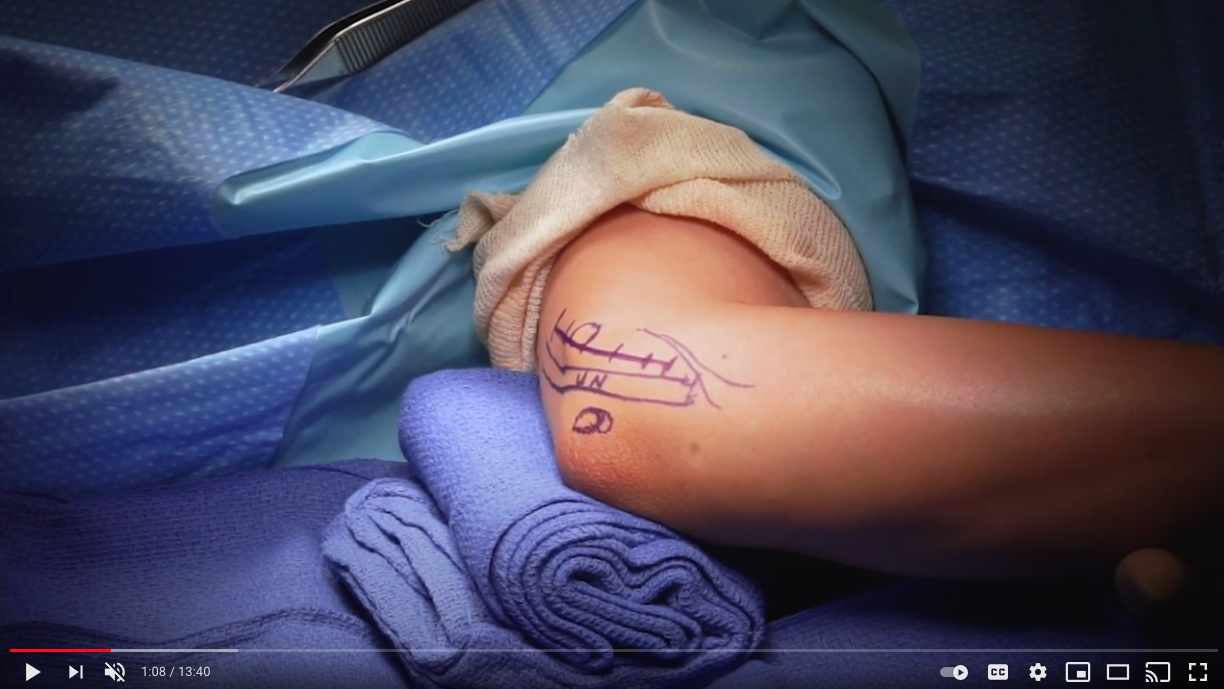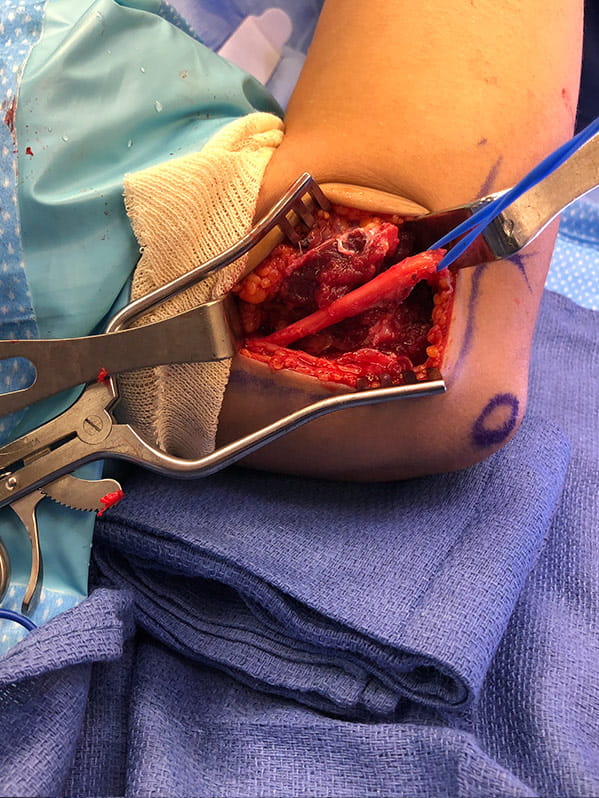Overview
A compression of one of your nerves in your upper extremity may lead to numbness, tingling and shooting pain into your fingertips waking you up at night with possible loss of hand function. Nerve compressions are extremely common and negatively affect your life.
Some of the more common nerve compressions in the hand and wrist are carpal tunnel syndrome, cubital tunnel syndrome and ulnar tunnel syndrome. You can certainly have one or more of these nerve compressions simultaneously.
We treat all nerve compressions offering both non-surgical and surgical options. Specifically, as a hand and microsurgeon, I use the most up-to-date techniques including the use of a microscope, muscle flaps, and nerve conduits/wraps when indicated to release the compression on the involved nerve.
Conditions

- Carpal Tunnel Syndrome
- Cubital Tunnel Syndrome
- Ulnar Tunnel Syndrome
- Pronator Syndrome
- Radial Tunnel Syndrome
- Wartenberg’s Syndrome
- Posterior Interosseous Nerve Compression
Carpal Tunnel Syndrome
This is the most common nerve compression that leads to nocturnal numbness, tingling and shooting pains in the thumb through the radial half of the ring finger. In addition, patients can have issues with dropping objects as the muscles of the thumb used for pinch are weakened. After reviewing the patient’s symptoms and performing provocative maneuvers associated with carpal tunnel syndrome, the patient is generally sent to obtain nerve tests to determine the severity of carpal tunnel syndrome.
Combining the patient’s history/physical exam with the nerve tests, we work with the patient to determine what options would be best for management. The vast majority are treated conservatively with braces, steroidal injections, or a combination of the two. Those who meet surgical criteria are taken to surgery usually after failing conservative management. Our practice prides ourselves on not rushing all patients to surgery.
Dr. Anup Patel Advantage
Dr. Anup Patel performs carpal tunnel surgery by placing the incision extremely far away from the median nerve (on the ulnar aspect) to minimize scarring on the nerve. This diminishes the risk of recurrence.
He uses loupe magnification to release the nerve completely ensuring that there is no compression at the end of the case that diminishes the risk of an incomplete release. Finally, using plastic surgery techniques, he closes the skin to provide an almost imperceptible scar.
Please see our YouTube channel for an intraoperative experience of how Dr. Anup Patel delivers some of the best carpal tunnel surgical outcomes. Do not take our word for it, but see our patient examples accompanied by testimonials.

Symptoms
- Numbness, tingling, weakness, paresthesias and pain radiates from the elbow to the tips of the ring and small finger
- Motor weakness leading to clawing of the ring and small fingers, loss of thumb pinch, and inability to bring the small finger to the hand
- These symptoms may become worse at night and/or when the elbow is flexed (e.g., talking on a phone)
Causes
- Compression of the ulnar nerve in the cubital tunnel (elbow) that can lead to ischemia of the nerve
Treatment: Non-Surgical
- Elbow brace
- NSAIDs
Treatment: Surgical
- Release of the cubital tunnel with possible transposition of the nerve
Carpal Tunnel Patient Examples
Patient 1
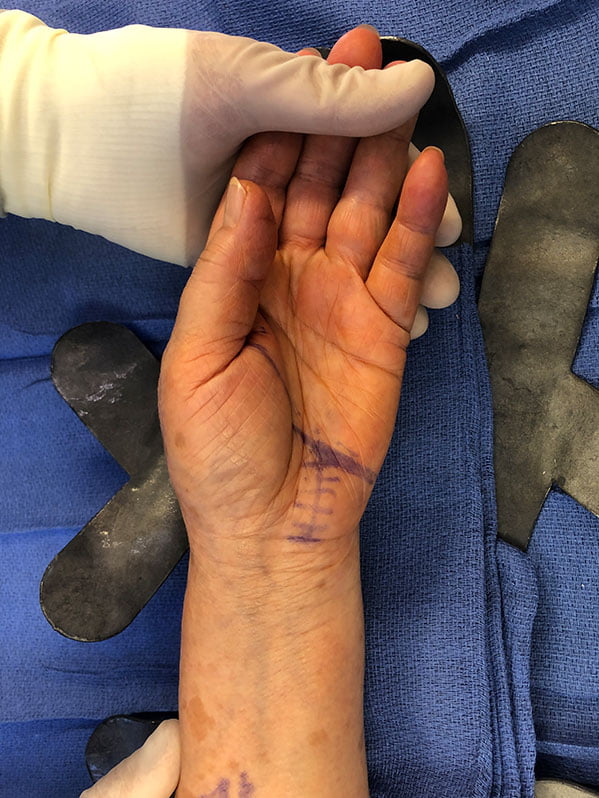
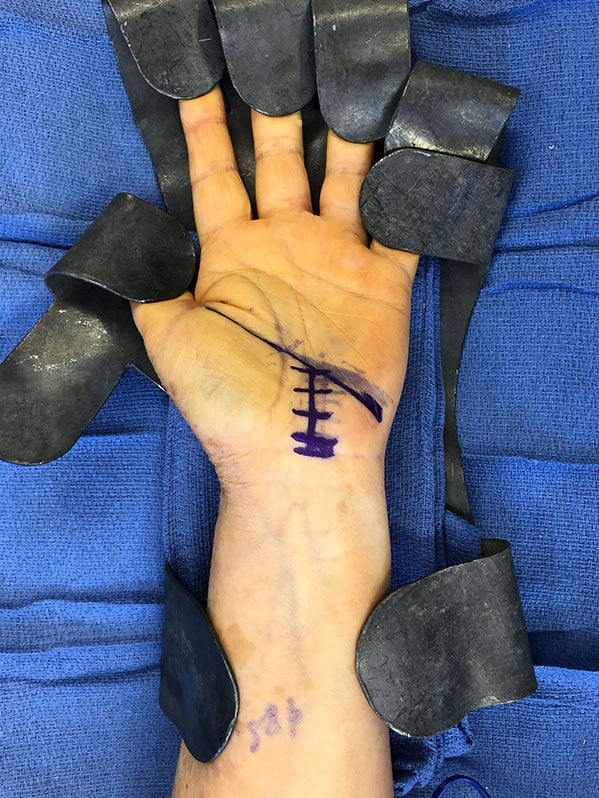
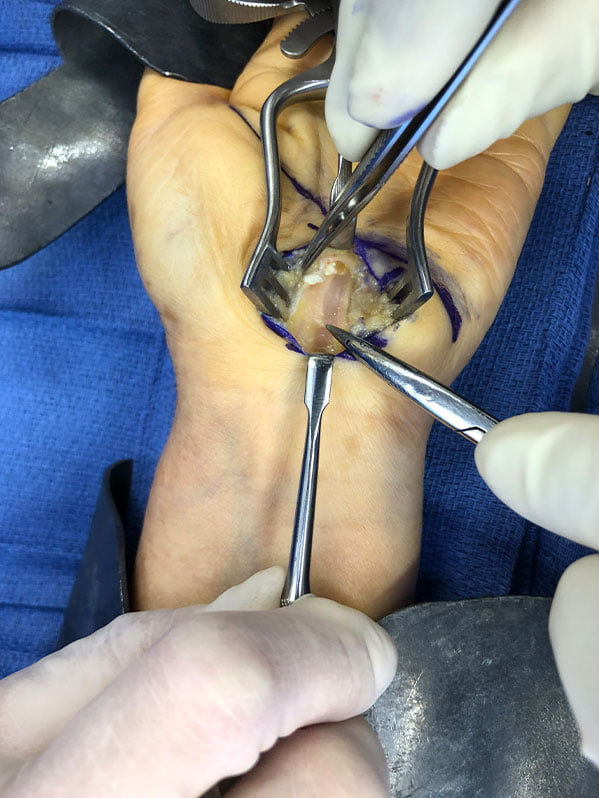
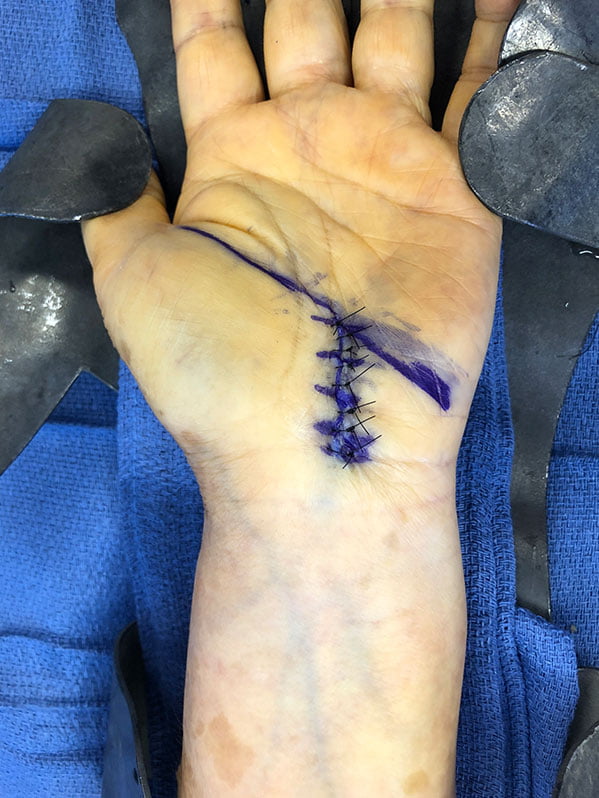
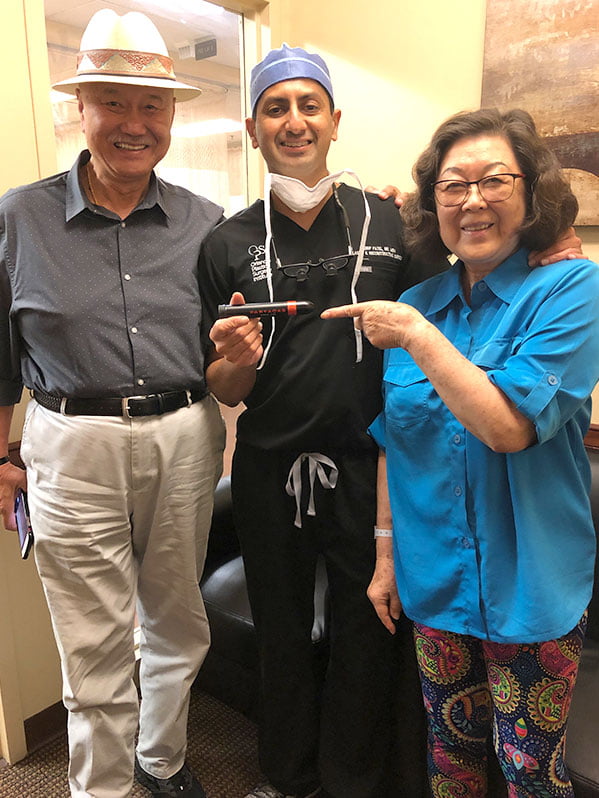
Patient 2

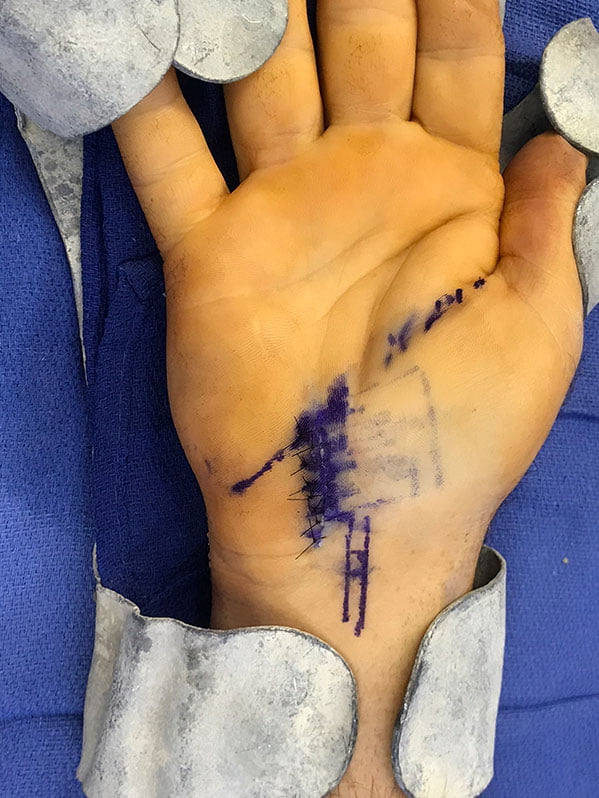
Patient 3
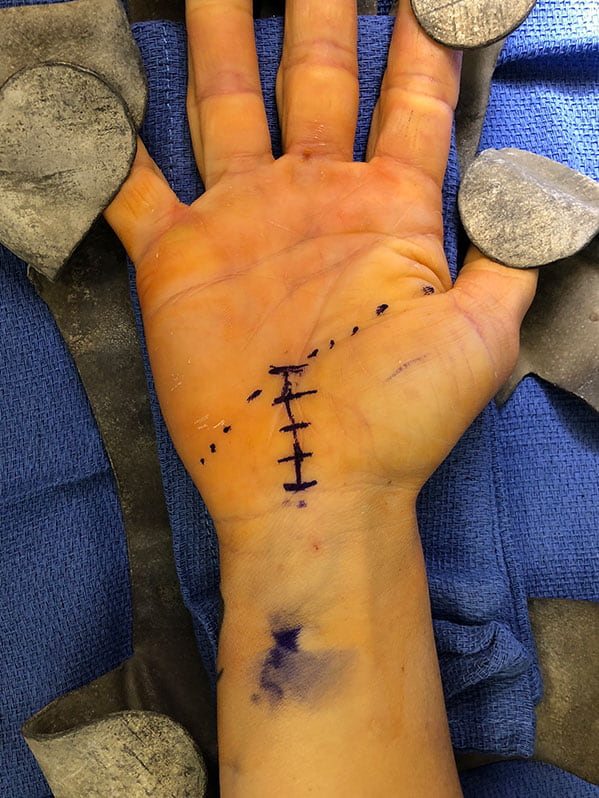
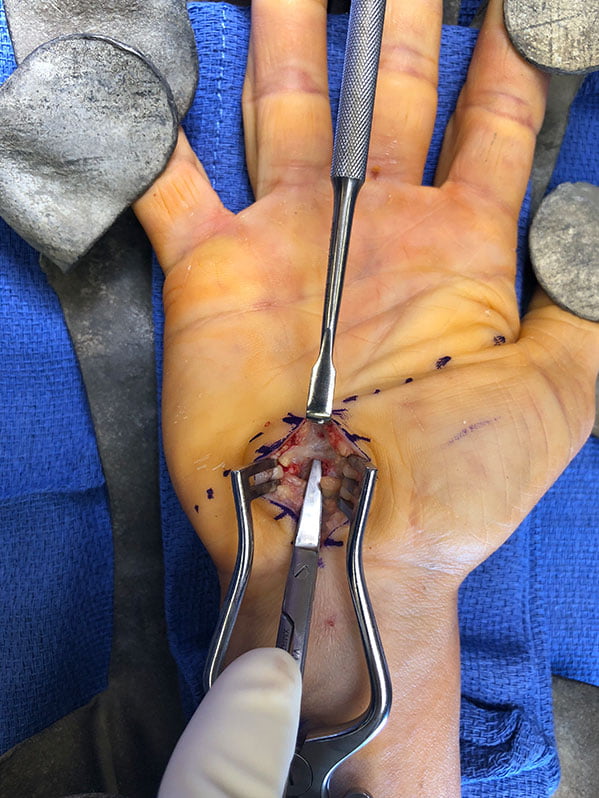
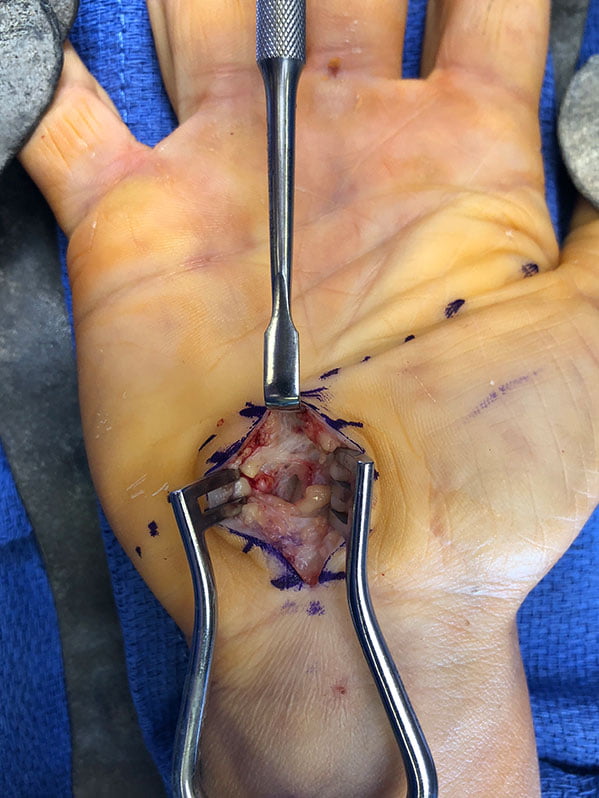
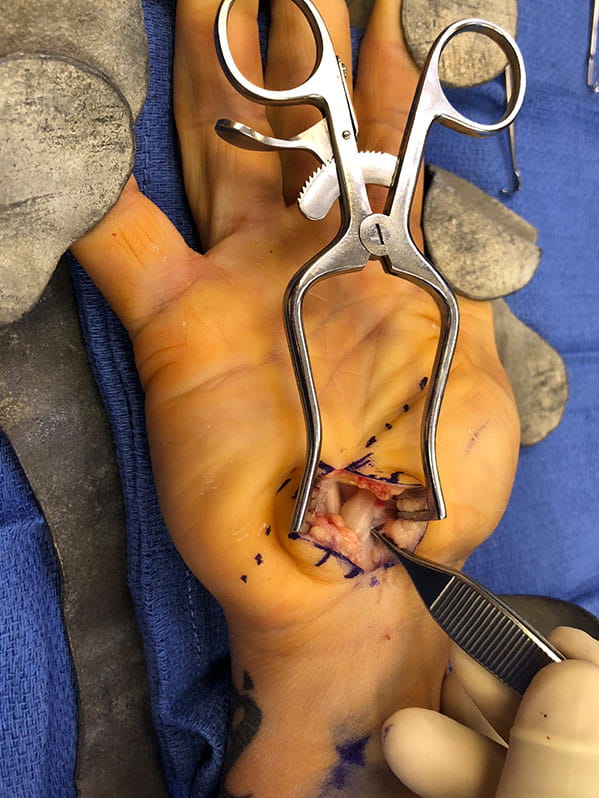
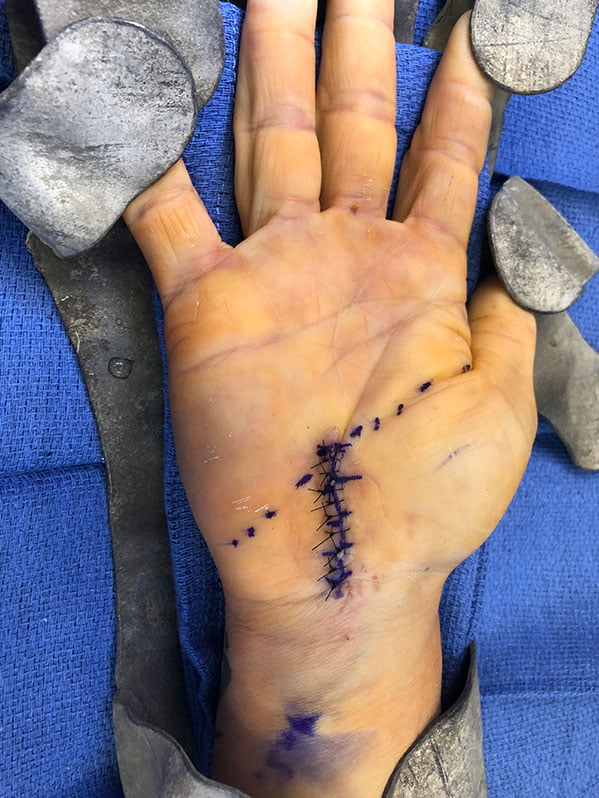
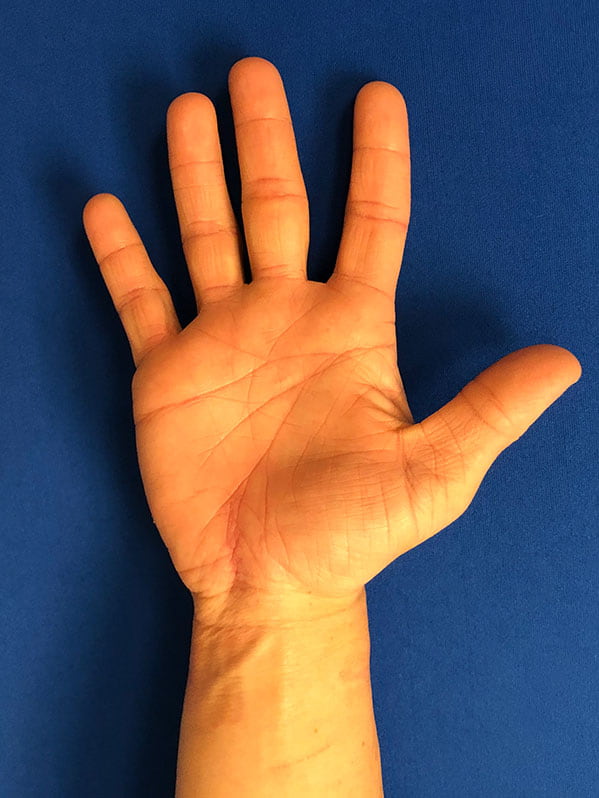

Cubital Tunnel Syndrome
This is the second most common nerve compression that leads to nocturnal numbness, tingling and shooting pains in the ulnar half of the ring finger and small finger. In addition, patients can have issues with dropping objects and grip as the muscles innervated by the ulnar nerve are weakened. The patient often describes the symptoms come on with the elbow flexed, particularly when driving a car or holding a phone.
After reviewing the patient’s symptoms and performing provocative maneuvers associated with cubital tunnel syndrome, the patient is generally sent to obtain nerve tests to determine the severity of cubital tunnel syndrome. Combining the patient’s history/physical exam with the nerve tests, we work with the patient to determine what options would be best for management.
The vast majority are treated conservatively with braces, activity modification, or a combination of the two. Those who meet surgical criteria are taken to surgery usually after failing conservative management. Our practice prides ourselves on not rushing all patients to surgery.
Dr. Anup Patel Advantage
Dr. Anup Patel performs cubital tunnel surgery by performing a full release of the ulnar nerve under loupe magnification. The nerve then is transposed under a bed of muscle (anterior submusuclar transposition of the ulnar nerve) to protect the nerve and prevent the nerve from slipping (a common cause of failed surgery).
Finally, using plastic surgery techniques, he closes the skin to provide an almost imperceptible scar. Please see our YouTube channel for an intraoperative experience of how Dr. Anup Patel delivers some of the best cubital tunnel surgical outcomes. Do not take our word for it, but see our patient examples accompanied by testimonials.

Symptoms
- Numbness, tingling, weakness, paresthesias and pain radiates from the elbow to the tips of the ring and small finger
- Motor weakness leading to clawing of the ring and small fingers, loss of thumb pinch, and inability to bring the small finger to the hand
- These symptoms may become worse at night and/or when the elbow is flexed (e.g., talking on a phone)
Causes
- Compression of the ulnar nerve in the cubital tunnel (elbow) that can lead to ischemia of the nerve
Treatment: Non-Surgical
- Elbow brace
- NSAIDs
Treatment: Surgical
- Release of the cubital tunnel with possible transposition of the nerve
Cubital Tunnel Patient Examples
Patient 1
29 year old financial advisor from Boston who saw two other surgeons before flying to our office for a tertiary opinion. She presents with numbness and tingling in the ring and small fingers, pain over the elbow with flexion, and loss of grip strength. After cubital tunnel release with anterior submuscular transposition of the ulnar nerve, the patient has resolution of all symptoms 6 months later.
Patient 2
32 year old business owner who saw two other surgeons before coming from Tampa to our office for a tertiary opinion. He presents with numbness and tingling in the ring and small fingers, pain over the elbow with flexion, loss of grip strength, and the nerve catching over the elbow. After cubital tunnel release with anterior submuscular transposition of the ulnar nerve, the patient has resolution of all symptoms 6 months later.


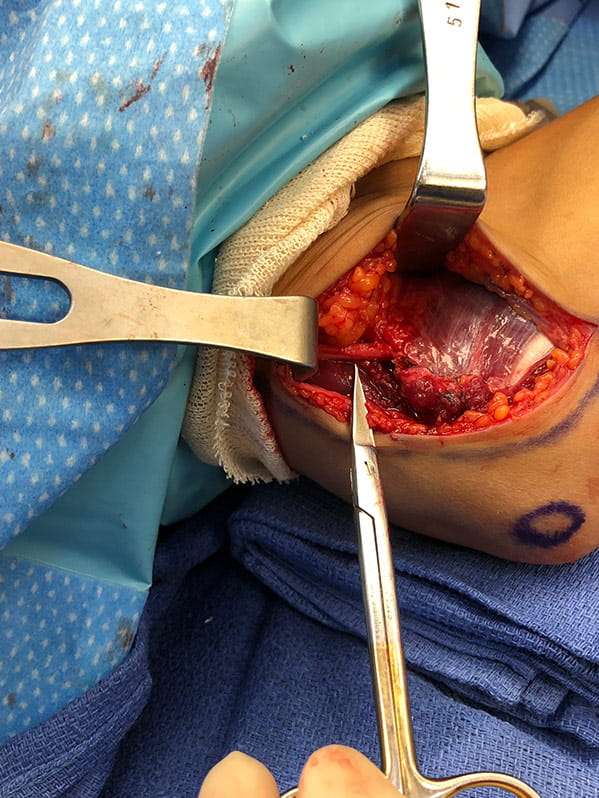
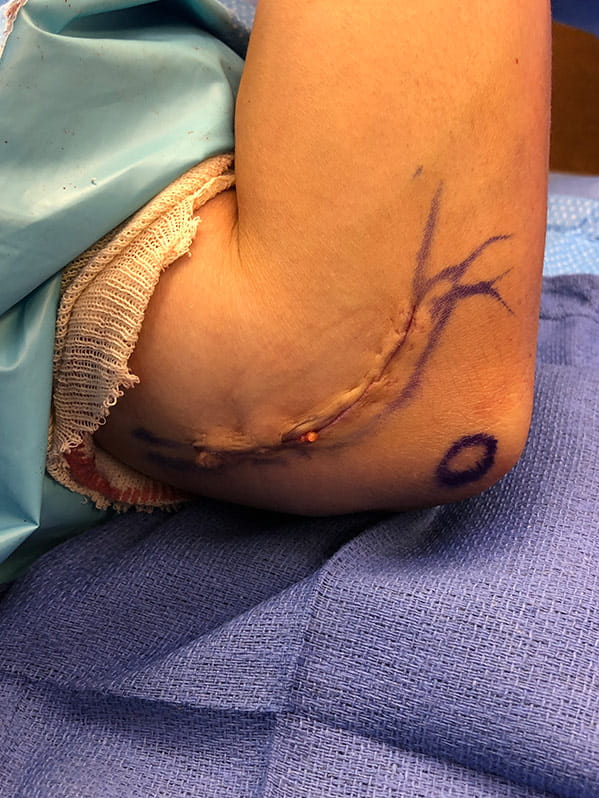

Patient 3
35 year old nurse comes as a secondary opinion for cubital tunnel syndrome. She presents with numbness and tingling in the ring and small fingers, pain over the elbow with flexion, and loss of grip strength. After cubital tunnel release with anterior sub-muscular transposition of the ulnar nerve, the patient has resolution of all symptoms 6 months later, treating patients in the emergency room without any issues.
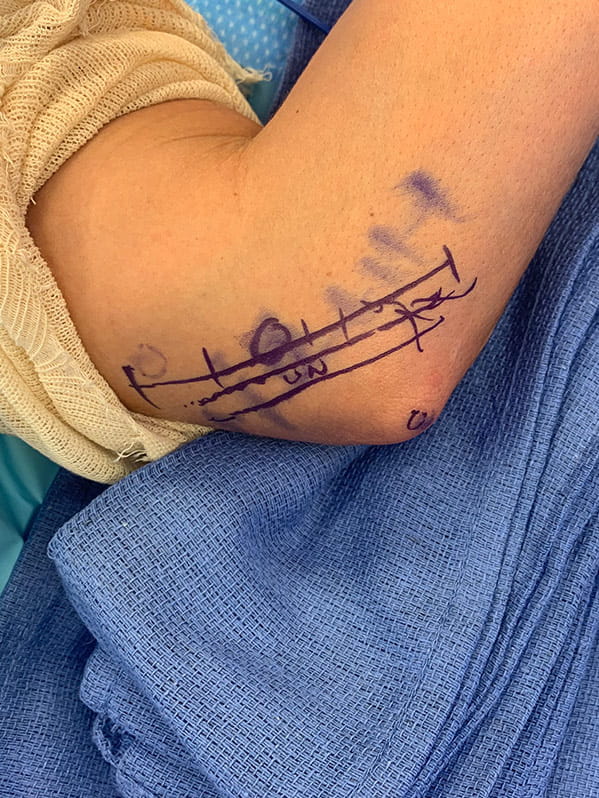


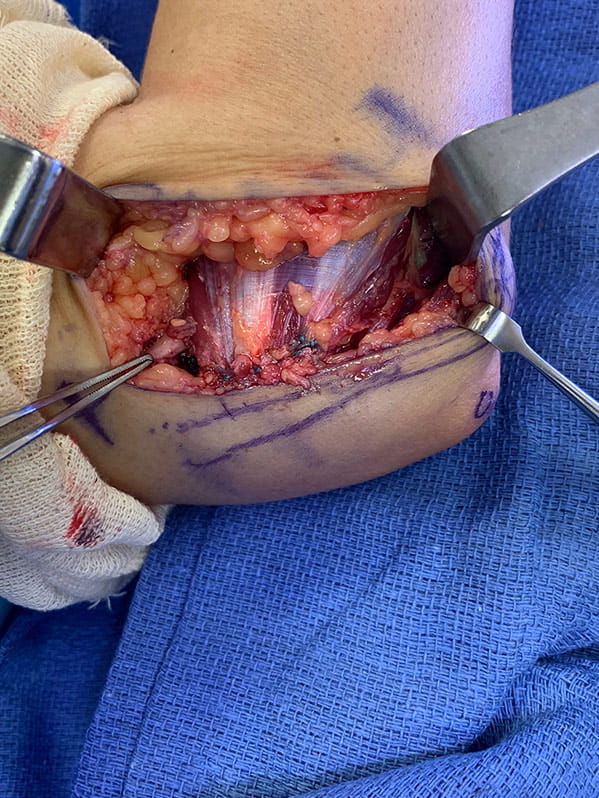

Recurrent Carpal Tunnel Syndrome Patient Examples
Patient 1
67 year old female school teacher who underwent right open carpal tunnel release 15 years ago with an outside surgeon presents with nocturnal numbness, tingling and paresthesias in the right thumb to radial half of the ring finger that wakes her up at night. She has failed steroidal injection and bracing. She has electrodiagnostic studies showing moderate to severe carpal tunnel syndrome.
The patient undergoes extended open carpal tunnel release, internal neurolysis of the median nerve using a microscope, and nerve wrap. She has improvement of her symptoms enabling her to sleep.

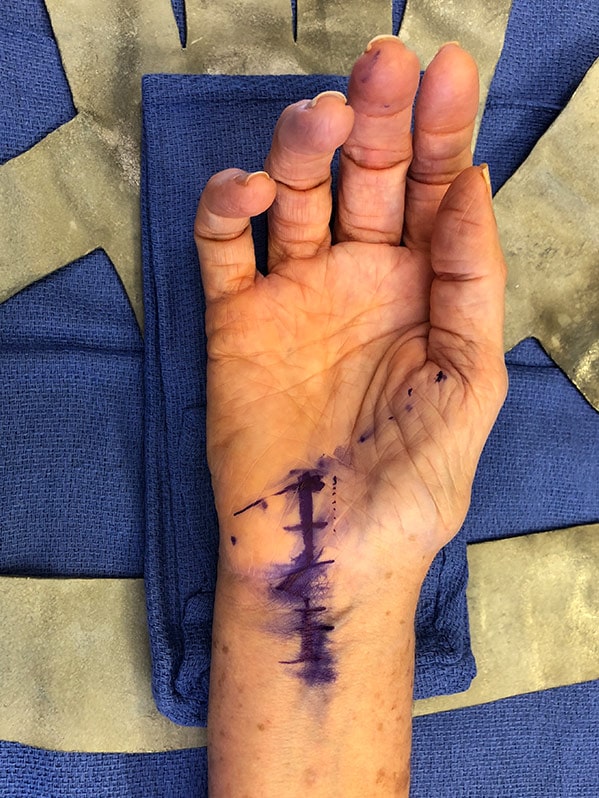

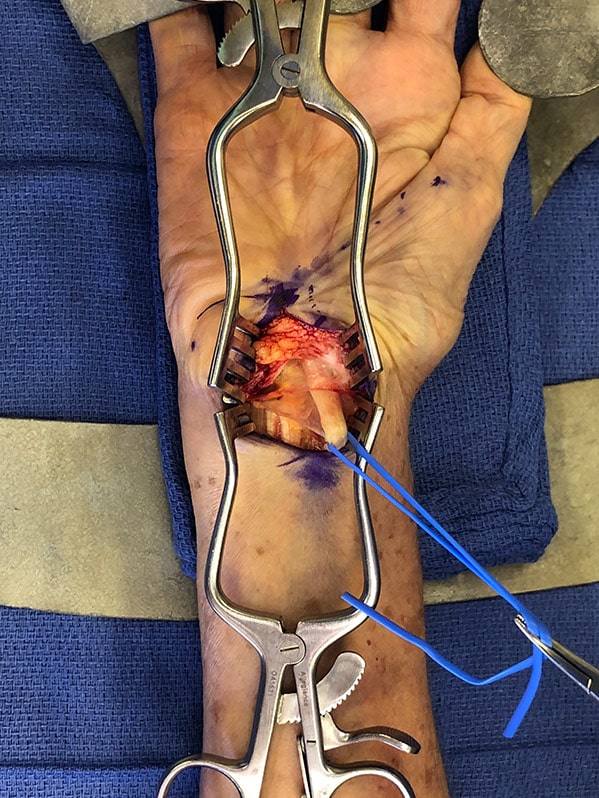
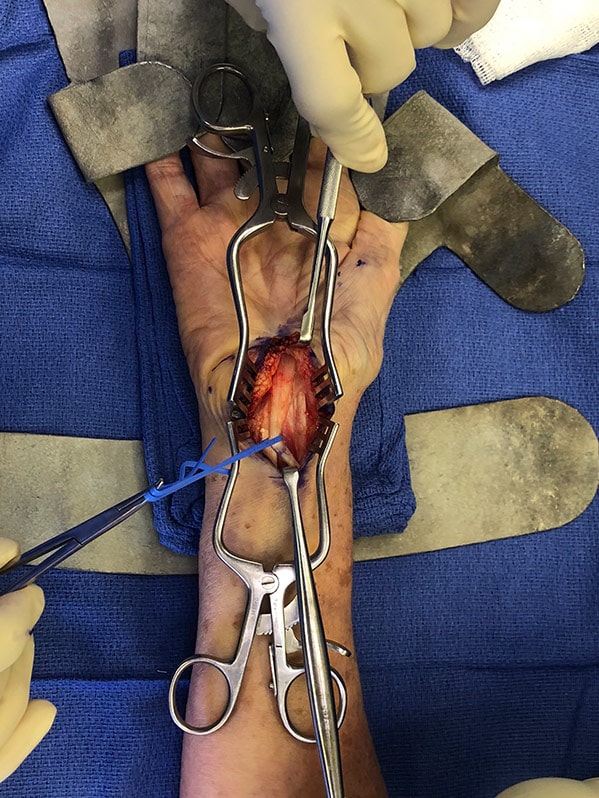
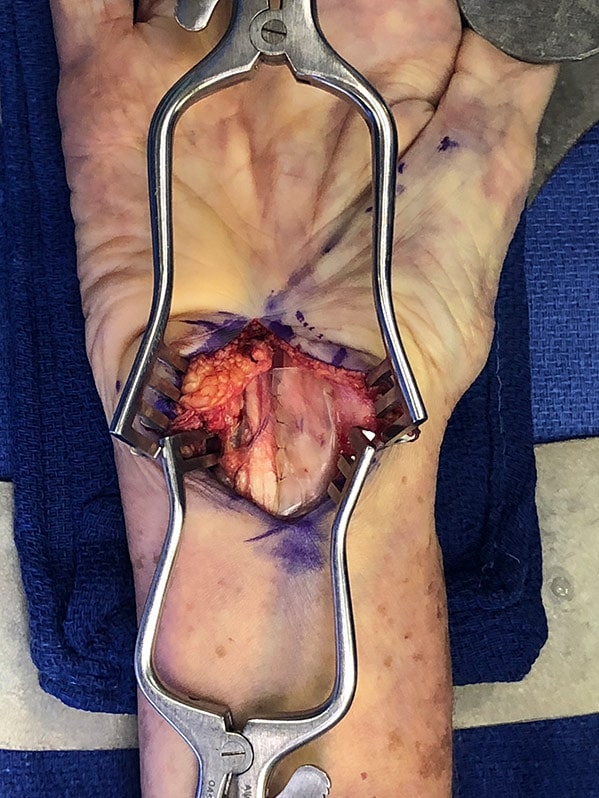
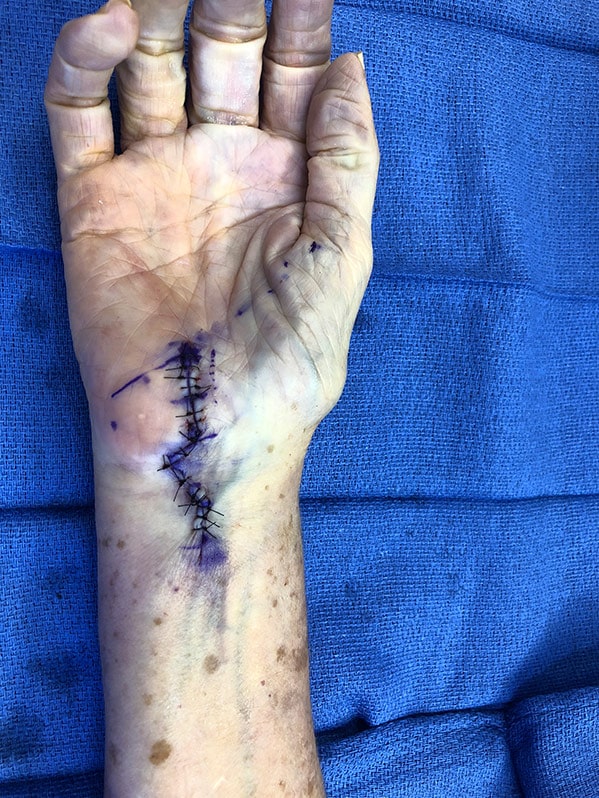

Patient 2
62 year old retired female who underwent right open carpal tunnel release 12 years ago with an outside surgeon presents with nocturnal numbness, tingling and paresthesias in the right thumb to radial half of the ring finger that wakes her up at night. She has failed steroidal injection and bracing. She has electrodiagnostic studies showing moderate to severe carpal tunnel syndrome.
The patient undergoes extended open carpal tunnel release, internal neurolysis of the median nerve using a microscope, and nerve wrap. She has significant alleviation of her symptoms enabling her to sleep.

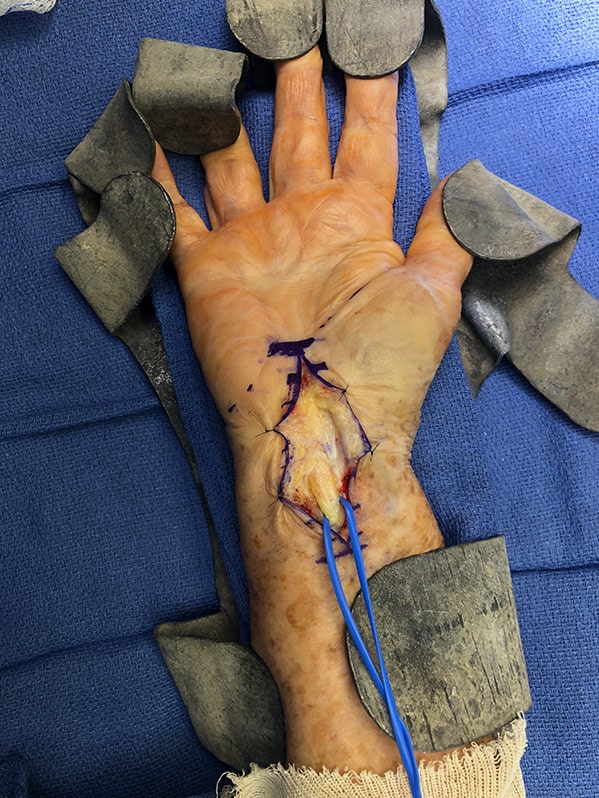

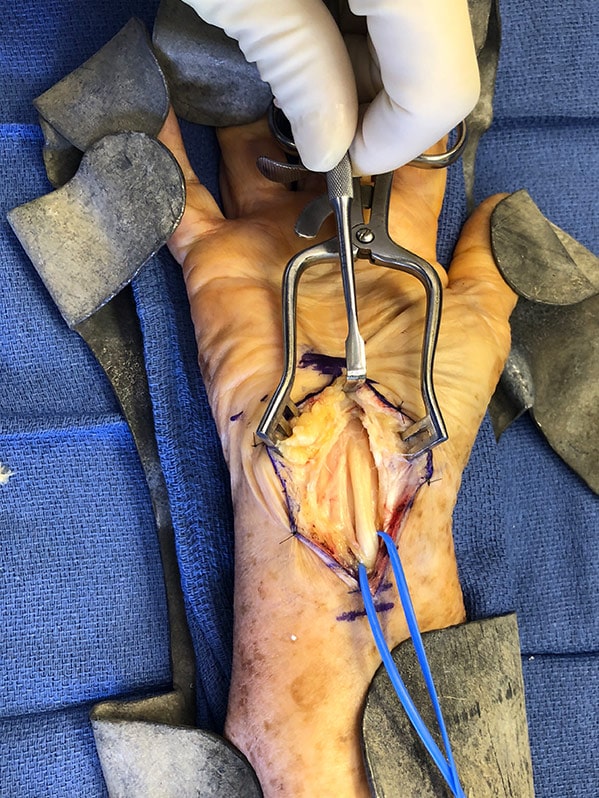
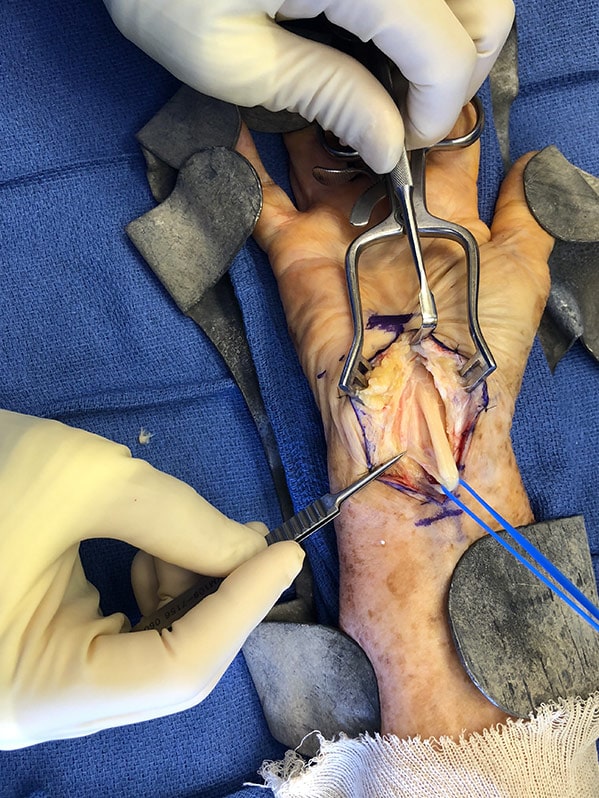
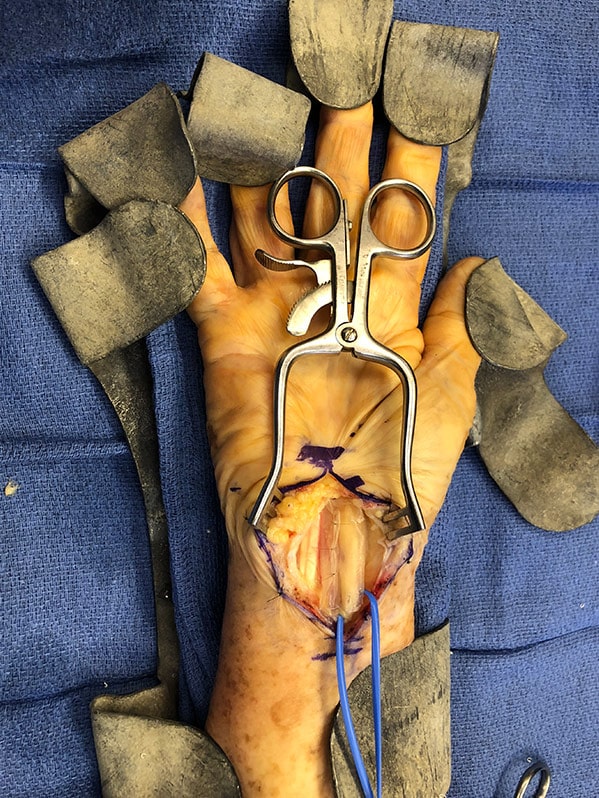
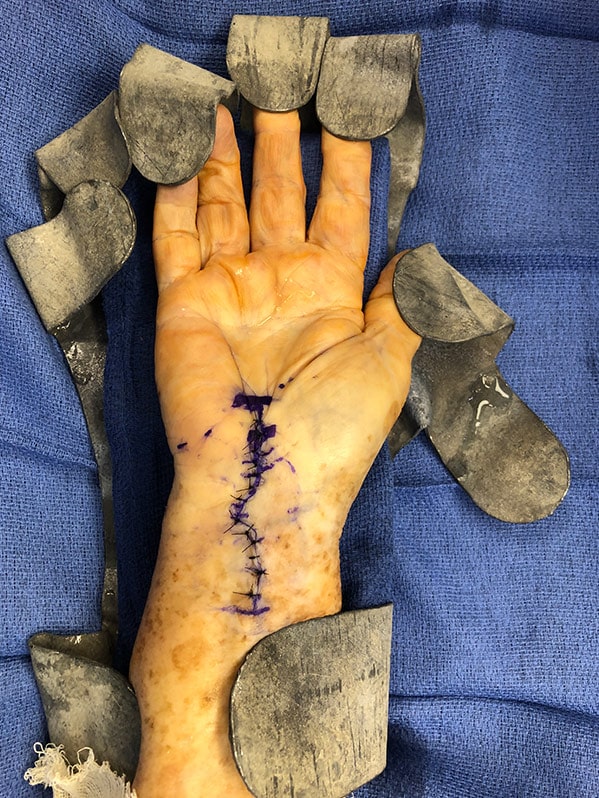
Pronator Syndrome
(Anterior Interosseous Syndrome)
Dr. Anup Patel Advantage
TBD.

Symptoms
- Pain and ache over the top part (dorsal) of the forearm
- Motor weakness manifested by inability to extend the wrist, fingers, and thumb
Causes
- Compression of the posterior interosseous nerve (a branch of the radial nerve) in the forearm
Treatment: Non-Surgical
- NSAIDs
- Activity modification
- Steroidal medication
Treatment: Surgical
- Release of the compressive structures of the posterior interosseous nerve in the forearm
Pronator Syndrome Patient Examples
Patient 1
67 year old female school teacher who underwent right open carpal tunnel release 15 years ago with an outside surgeon presents with nocturnal numbness, tingling and paresthesias in the right thumb to radial half of the ring finger that wakes her up at night. She has failed steroidal injection and bracing. She has electrodiagnostic studies showing moderate to severe carpal tunnel syndrome.
The patient undergoes extended open carpal tunnel release, internal neurolysis of the median nerve using a microscope, and nerve wrap. She has improvement of her symptoms enabling her to sleep.








Radial Nerve Compression
(Posterior Interosseous Syndrome,
Warternberg’s Syndrome)
Dr. Anup Patel Advantage
Dr. Anup Patel performs decompression of the rarest disorders of nerve compressions in the world. Trained by Dr. David T.W. Chiu, a pioneer and leader in microsurgery and nerve pathology, Dr. Patel often employs microsurgical techniques with precise dissection to relieve pressure on the nerves.
These disorders are extremely rare, but patients come from around the globe for his expertise in this field. These rare disorders include Warterberg’s syndrome, PIN Syndrome, AIN Syndrome, and recurrent carpal tunnel syndrome.

Symptoms
- Pain and ache over the top part (dorsal) of the forearm
- Motor weakness manifested by inability to extend the wrist, fingers, and thumb
Causes
- Compression of the posterior interosseous nerve (a branch of the radial nerve) in the forearm
Treatment: Non-Surgical
- NSAIDs
- Activity modification
- Steroidal medication
Treatment: Surgical
- Release of the compressive structures of the posterior interosseous nerve in the forearm
Radial Nerve Compression Patient Examples
Patient 1
62 year old female dentist presents with radial nerve dysfunction, namely posterior interosseous syndrome, for the last six months. She comes after seeing several other surgeons for loss of ability to extend the wrist and all the digits including the thumb. She decompression of the posterior interosseous nerve using microsurgical techniques and resolution of her symptoms. She has returned to being a dentist without any issues and full strength of her wrist and fingers.
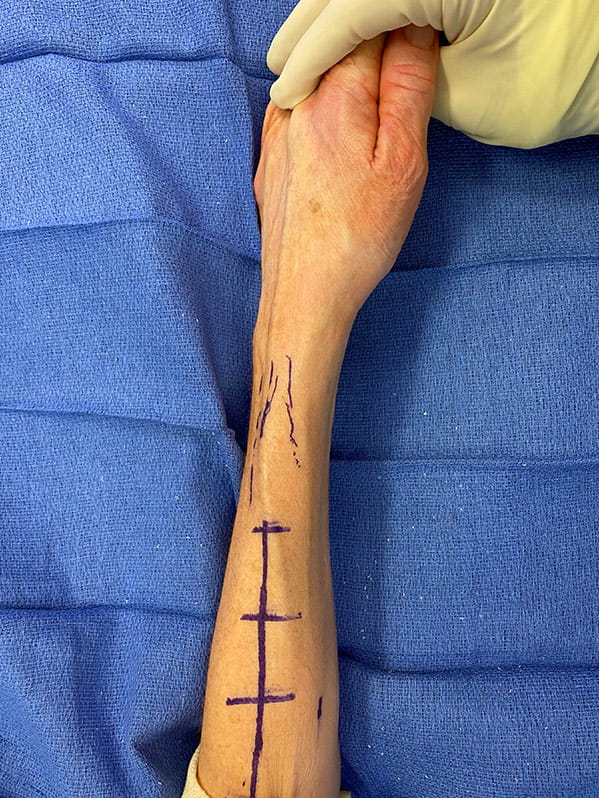
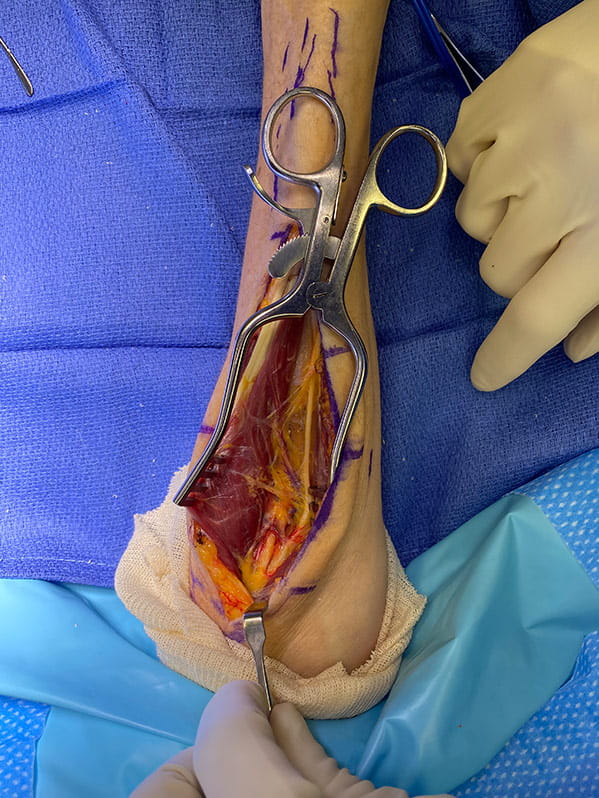
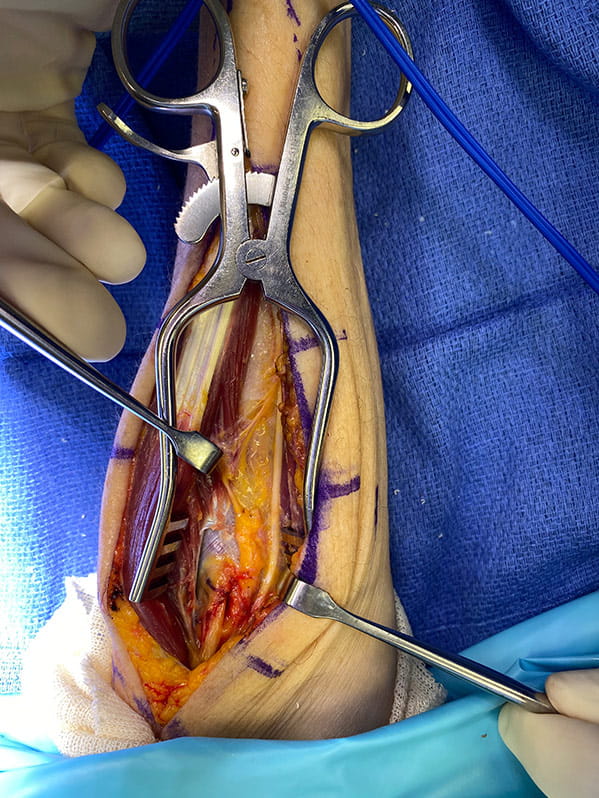
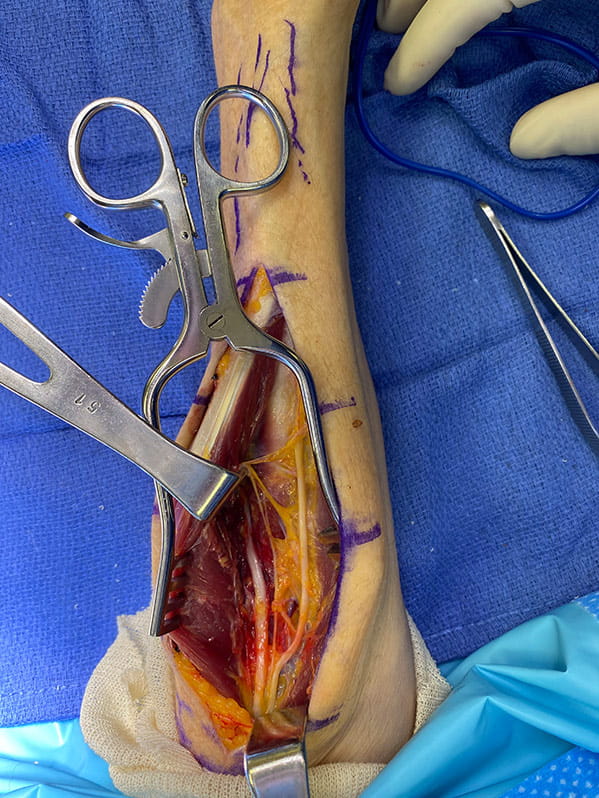

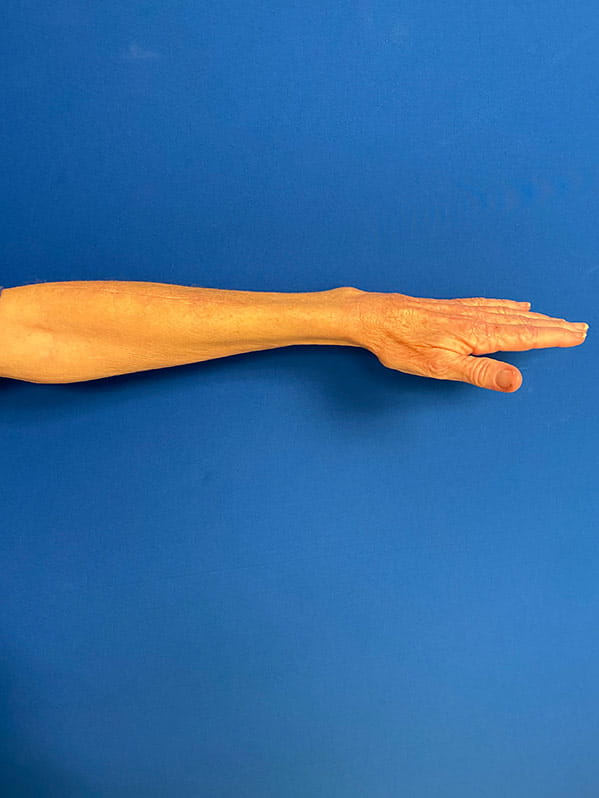
Book an Appointment or Ask a Question

Dr. Anup Patel
Dr. Anup Patel is a board-certified plastic and reconstructive surgeon trained in aesthetic, hand/upper extremity and reconstructive surgery. He completed his plastic and reconstructive surgery training at the premier Yale University followed by a hand and microsurgery fellowship at the New York University Institute of Reconstructive Plastic Surgery and Mount Sinai Department of Orthopedics. Dr. Patel received his MD and MBA from the Yale University School of Medicine and Yale University School of Management, respectively. He graduated as the valedictorian of his class at the University of Florida majoring in economics, biochemistry and molecular genetics and valedictorian of his high-school class at Lake Highland.
